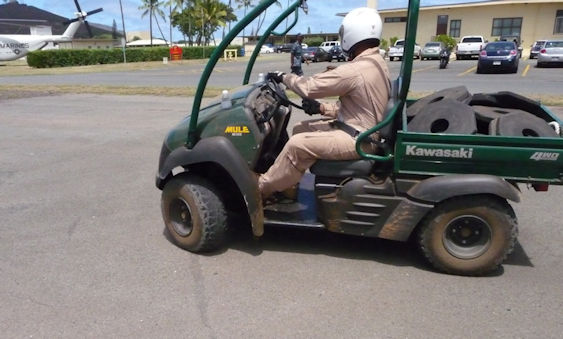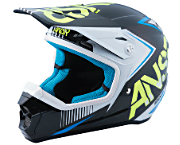
© 2019 by Bill Uhl, ATV Expert Witness
When operating an ATV, UTV, ROV, SxS, RZRs or any of our new 4 wheeled off-highway vehicles with low pressure tires, manufacturers of different types of off-highway vehicles (OHVs) tell operators not to operate their vehicles on an asphalt surface, including sidewalks, paths, parking lots, driveways and roads. It’s not surprising if operators and new owners are confused because manufacturers do not fully inform them why this is so.
As a Safety Trainer and Court-Qualified Expert Witness regarding ATVs, UTVs, ROVs, SxS, RZRs and other off-highway vehicles, I’m often asked why manufacturers fail to explain the reasons why driving or riding on asphalt is a genuine problem. Manufacturers don’t inform the public that operating on asphalt can create a potentially life-threatening situation.
Manufacturers also fail to inform owners / operators that the problem also exists with other types of surfaces. The manufacturers only say that the operator might collide with a full-size vehicle if they’re on an asphalt road, saying the above surfaces may affect handling and could result in a loss of control.
Manufacturers also fail to explain that the below surfaces would affect handling and that all of the above conditions can and do exist off road. In other words, manufacturers’ warnings are incomplete at best.
Just think for a moment what makes asphalt quite different than most other surfaces.
- First note: All asphalt is not the same. There are variations in the texture of the surface.
- Some are rougher. Others are as smooth as glass.
- Some asphalt is very old and rough.
- Very new, smooth asphalt that has just been laid down still has oil coming to the surface making it very slick.
- Asphalt age varies tremendously, from very old to brand new.
- My point is that the age of asphalt is very critical regarding how it will interface with the low-pressure tires of an off-highway vehicle (OHV, like an ATV or UTV).
- What happens to asphalt when the wind blows dust and dirt onto its surface? What happens when a summer rainstorm adds water to the mix?
- As you can see, asphalt is a very unpredictable surface.
- It is also significantly affected by wet and dry weather along with hot and cold temperatures.
When you take the above into account, you begin to see part of what makes riding or driving on asphalt so dangerous.
Is asphalt the only surface that has some of these characteristics? No.
Think about other surfaces and what they present to the low-pressure tires of an OHV.
- Sand … wet, dry or frozen.
- Clay … wet or dry.
- Clay with embedded small, sharp-edged pebbles.
- Clay hard packed or with maximum grip that occurs as it starts to dry out after being saturated.
- Dark brown soil like what you would like to have in your garden or flower beds.
- Decomposed granite that looks like rock crumbling into a large sand type of mixture next to the hard-base rock or just covering the ground.
- What about soil with vegetation growing in it, like grass, weeds and small brush? During an emergency, do these natural materials provide a better interface with the tires than the plain wet and muddy soil next to them?
- Consider slick rock composed of different types of mixtures of aged minerals that have hardened into solid rock from heat and pressure over time.
- Round river type rock or fractured rock with sharp edges or exposed roots embedded into the soil.
- Now consider a mixture of all of the above.
Think about how weather and moisture change all of the above materials, whether they’re in the form of rain, snow, frozen or “bone dry,” along with all of the variations to the moisture content of the surfaces.
The bottom line: How does the tire interface with the surface that it is being driven over?
- Does tire pressure affect how the tire interfaces with the surface?
- Or does the type / shape of the tire tread and its rubber composition, along with the wear on the tire tread affect the interface with the surface?
- Do dry or wet conditions affect how the tire will interface with the surface?
- Does weight transfer affect how tires interface with the surface?
- Can throttle control aid in the interface of the tires with the surface?
- Is it possible to find an area next to where everybody else is riding where you’ll have a better interface with the surface?
- If so, you can pick different lines of travel where the interface is better than others.
- Get outside the “box” where everyone else is choosing to travel. Identify the lines that better meet your needs.
What do all of these surfaces have in common?
Each provides a different interface / amounts of traction / grip to the tires under diverse conditions found while riding or driving across the globe.
Type of tire tread and rubber composition, along with tire pressure in each tire, will have a dramatic affect on how much traction / grip the tires will have on any given surface. Then when you mix in throttle control, you get the most traction from what is available.
The asphalt surface is not really the problem. The problem is how much traction does the asphalt surface provide in relationship to other surfaces the operator is used to riding on?
Other surfaces, like slick rock or hard packed dry clay with embedded sharp-edged rock in it, provide close to maximum traction like asphalt. The amount of traction is only part of the equation. The real problem occurs when tires slip on whatever the surface they’re operating on and then unexpectedly regain traction. Tires re-adhering to the surface are the true cause of the problem, not the fact that the surface is asphalt. This re-adhering can occur on any type of surface, even on ice or other snow-covered surfaces.
Note: Because the surfaces provide close to maximum traction, all steering input is exaggerated because low-pressure tires are designed to slip. When they don’t slip as designed, the steering input sensitivity is heightened.
Here’s the question you should ask yourself: Can the low-pressure tires slip slightly on this particular surface when you’re cornering? Or do they just grab the surface like a thousand little fingers clinging for dear life?
All of the little things add up to the genuine and very large problem. What matters is the amount of traction available on any particular surface because it’s not just asphalt that creates this problem (even though the manufacturers don’t tell owners / operators the true reason they should not drive or ride on asphalt).
Bill Uhl is a Safety Trainer and Court-Qualified Expert Witness for cases involving all-terrain vehicles (ATVs), utility vehicles (UTVs / side by sides / ROVs / SxS / RZRs), snowmobiles, motorcycle dirt bikes, dual sport bikes and off-road bicycles trails. Uhl has completed over 75 cases while serving as an Expert Witness for both plaintiff and defense attorneys, this includes depositions and trial testimony. Click here for more information.


